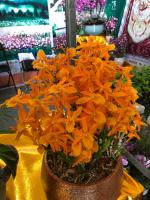What Percent of Trees Planted in a Riparian Buffer Survive?
Riparian buffers are strips of land that are located between water bodies and agricultural or urban areas. These buffers are designed to filter pollutants, prevent soil erosion, and provide a habitat for wildlife. Trees are an essential component of riparian buffers, but planting them is not enough. The survival rate of trees planted in riparian buffers depends on various factors, such as the planting method, species selection, and maintenance practices.
The Importance of Riparian Buffers
Riparian buffers are critical for maintaining the water quality of streams, rivers, and lakes. They are natural filtration systems that remove impurities such as nitrogen, phosphorus, and sediments from the water. These pollutants can come from various sources, including agricultural runoff, urban stormwater, and wastewater treatment plants. By removing these pollutants, riparian buffers help to protect aquatic ecosystems and the health of the people who rely on them. Riparian buffers are also essential for preventing soil erosion and reducing the impact of floods.
The Planting Method
The survival rate of trees planted in a riparian buffer depends on the planting method. There are two primary methods of planting trees in riparian buffers: bare-root and containerized. Bare-root planting involves removing the tree from the soil it was grown in, shaking off the soil, and transplanting it into the buffer. Containerized planting involves planting a small sapling with its root ball intact.
Research has shown that bare-root planting has a higher survival rate than containerized planting. This is because bare-root planting allows for better root development, which is crucial for the tree's long-term survival. Containerized planting often results in circling roots, which can negatively affect the tree's growth and survival.
The Species Selection
The survival rate of trees planted in a riparian buffer also depends on the species selection. Trees that are native to the area have a higher survival rate than non-native species. This is because native species are adapted to the local climate and soil conditions, making them more resilient to environmental stressors. Additionally, native species provide important habitat for wildlife and promote biodiversity.
When selecting species for a riparian buffer, it's essential to consider the site's specific conditions, such as soil type, moisture level, and sunlight exposure. Trees that are well-suited to the site's conditions are more likely to survive and thrive.
The Maintenance Practices
The survival rate of trees planted in a riparian buffer also depends on the maintenance practices. Proper maintenance is crucial for the tree's health and long-term survival. Maintenance practices include watering, fertilizing, pruning, and weed control.
Young trees in a riparian buffer need regular watering during the first two years to establish a strong root system. Fertilizing can also help to promote growth and survival, but it's essential to use a slow-release fertilizer that won't cause excessive runoff. Pruning is necessary to remove dead or damaged branches and promote healthy growth.
Weed control is essential because weeds can compete with the young trees for water and nutrients. Weed control can be achieved through manual or chemical methods, but it's essential to use environmentally friendly techniques that won't harm the surrounding ecosystem.
The Survival Rate of Trees in Riparian Buffers
The survival rate of trees planted in riparian buffers varies depending on the planting method, species selection, and maintenance practices. According to a study published in the Journal of Forestry, the survival rate of trees planted in riparian buffers ranges from 42% to 98%. The study found that bare-root planting had a higher survival rate than containerized planting, and native species had a higher survival rate than non-native species.
Overall, the survival rate of trees planted in riparian buffers is influenced by many factors, and careful consideration should be taken to ensure that the trees survive and thrive. Trees are an essential component of riparian buffers and provide many benefits to the surrounding ecosystem, including improving water quality, reducing soil erosion, and providing habitat for wildlife.
Whether you're a landowner, farmer, or environmental professional, creating a healthy riparian buffer with thriving trees is an essential step in protecting our natural resources.

 how many times do yo...
how many times do yo... how many planted tre...
how many planted tre... how many pine trees ...
how many pine trees ... how many pecan trees...
how many pecan trees... how many plants comp...
how many plants comp... how many plants can ...
how many plants can ... how many plants and ...
how many plants and ... how many pepper plan...
how many pepper plan...





























